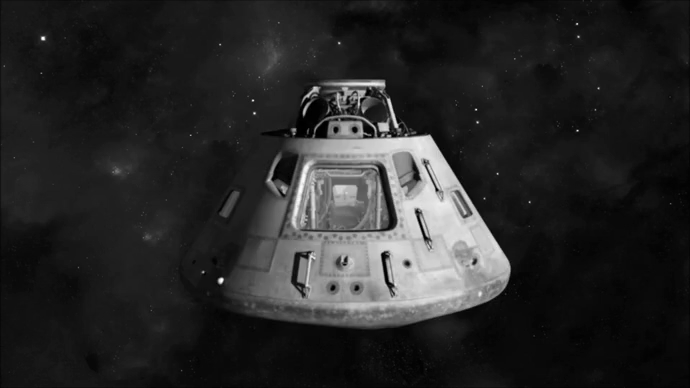Explore the Apollo 11 Command Module in 3D
For the first time, you can peek inside the craft that enabled “one giant leap for mankind”
Forty-seven years ago, mankind achieved what was once unthinkable when Neil Armstrong stepped onto the surface of the moon. But getting him there involved more than strapping the astronaut to a rocket and pressing “go.” Armstrong and his colleagues headed to space in the most advanced spacecraft of their time: the Apollo 11 command module, Columbia. Now, you can explore the module without leaving your couch with the help of a newly-released 3D model that offers unprecedented access to one of history’s most important technological achievements—and the inside scoop on what it was really like to be an Apollo astronaut.
The model is the result of painstaking digitization efforts by the Smithsonian Institution, which houses Columbia at the National Air and Space Museum, and Autodesk, Inc. Given the complexity of the craft—and the fact that photographers weren’t allowed to actually touch it while capturing every nook and cranny—the 3D model is an impressive feat.
It’s available to anyone with an internet connection and offers glimpses unavailable to museum visitors, who are not allowed to explore the inside of the craft. The model can be viewed online, but also comes with publicly available data files for 3-D printing or viewing with virtual reality goggles.

Armstrong, Edwin “Buzz” Aldrin and Michael Collins lived in Columbia during their time in space on the Apollo 11 mission, which launched from Cape Kennedy on July 16, 1969. Four days later, Aldrin and Armstrong headed to the moon’s surface on the “Eagle” lunar module.
Columbia itself is filled with clues as to life as an early astronaut. While photographing the inside of the module, curators discovered markings made by the astronauts on their mission, including information relayed by mission control and a hand-drawn calendar that documents the journey. The men even scribbled notes to one another on the walls, including a warning about “smelly waste!” that presumably cautioned intrepid explorers to keep away from a certain panel on the cramped craft.
On board, they made television transmissions, took care of navigation challenges, performed laser experiments and even demonstrated how astronauts ate. Collins, the third astronaut who stayed alone on Columbia while his colleagues descended to the lunar surface, experienced what he called “exultation” during his solitary wait. He loved Columbia so much that in one piece of graffiti, he wrote that he considered the craft “the best ship to come down the line. God bless her.”
All in all, Armstrong and Aldrin spent over 21 hours on the surface of the moon. How long will it take you to explore the interior of the craft that got them there? The only way to answer that is to head over to the Smithsonian X 3D site and find out for yourself.
/https://tf-cmsv2-smithsonianmag-media.s3.amazonaws.com/accounts/headshot/erin.png)


/https://tf-cmsv2-smithsonianmag-media.s3.amazonaws.com/accounts/headshot/erin.png)